Have you ever wondered how tracking dogs can find lost hikers or missing people, even days after they’ve disappeared? It’s no magic trick—it’s the extraordinary power of their noses! Tracking dogs, such as the renowned Bloodhound, can follow a trail for miles, thanks to their keen sense of smell, which is 100,000 times more powerful than a human’s.
But tracking dogs aren’t just about their amazing sense of smell—they’re also loyal, determined, and incredibly focused. In this article, we’ll dive into the world of tracking dogs and explore nine breeds that are among the best at what they do.
Excellent Tracking Dog Breeds
1. German Shorthaired Pointer
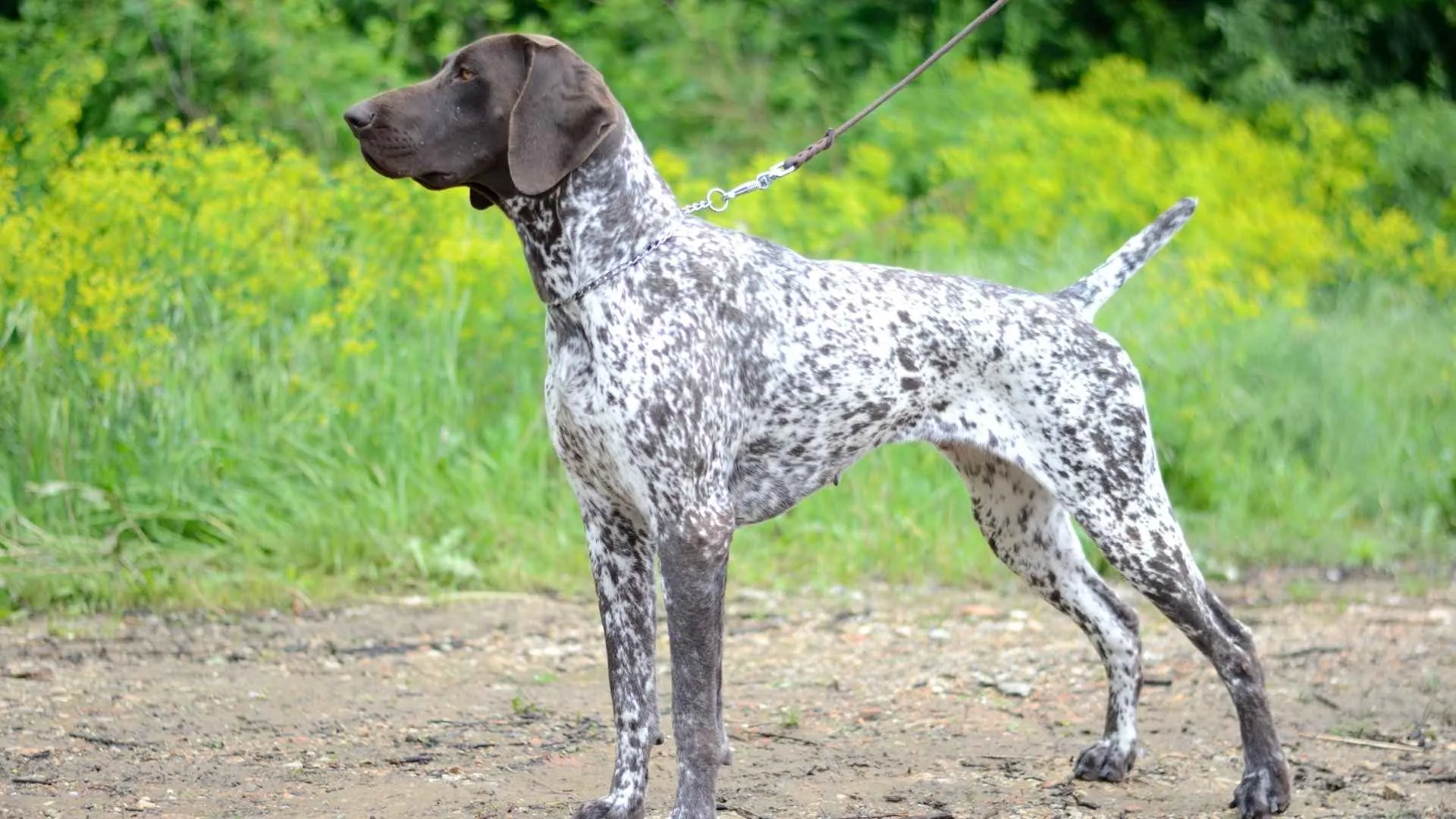
Bred in 19th-century Germany, the German Shorthaired Pointer was designed to be the ultimate hunting dog, skilled in both land and water pursuits. These dogs were prized for their versatility—able to point, retrieve, and track with stunning precision. Originally used for hunting feathered game, they quickly gained fame for their tracking instincts.
Athletic and lean, they’ve got a well-muscled body built for endurance and speed, as PetMD claims. You’ll notice their signature liver-colored coat, often dotted with speckles that make them even more striking. Their long ears and expressive eyes give them a noble, almost regal appearance. They’re clearly built for adventure, and they know it, too.
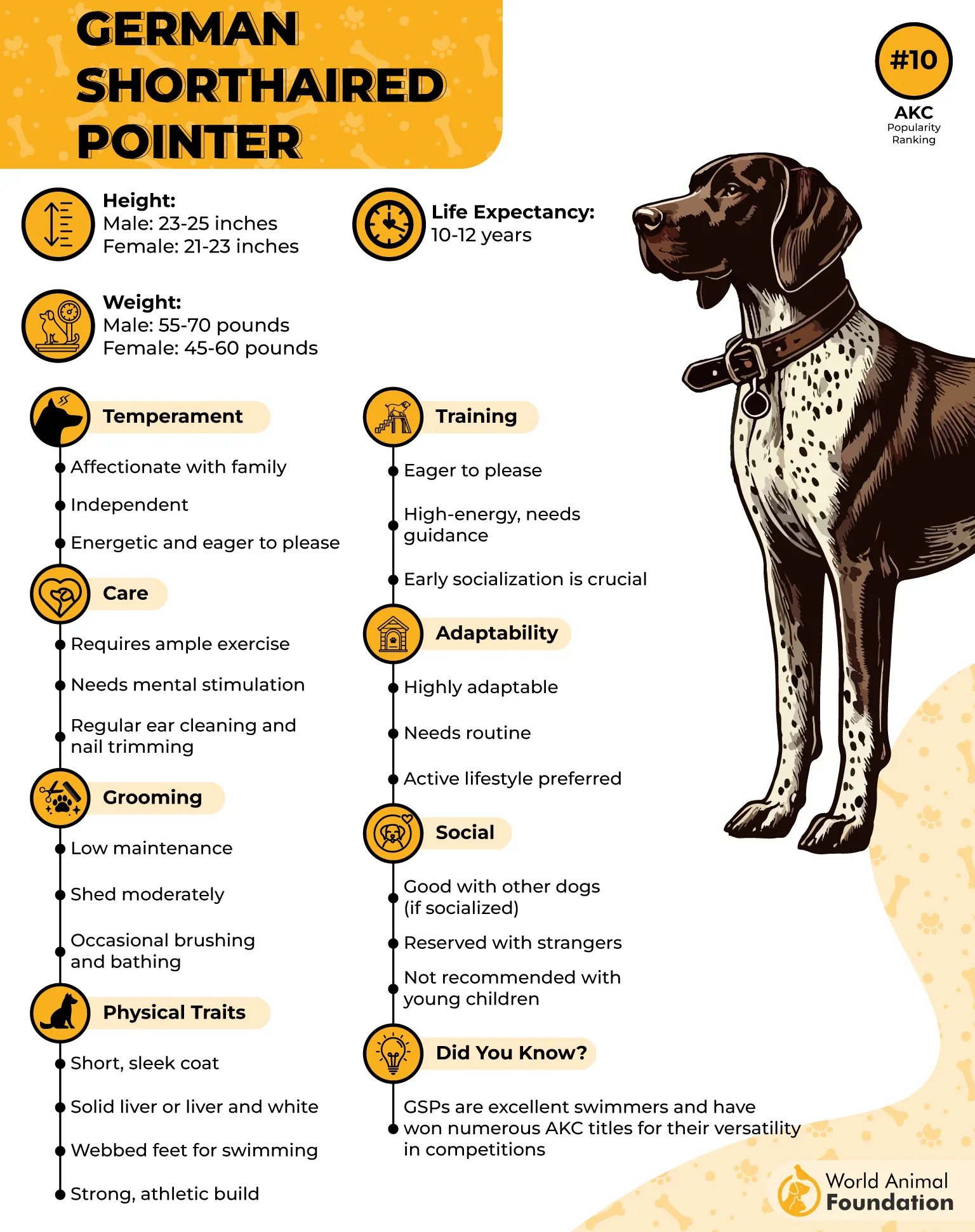
What sets them apart as one of the best tracking dogs is their exceptional drive to follow scent trails with laser-like focus. They can stay on a trail for hours without distraction, thanks to their unmatched stamina. Their ability to track in diverse terrain—wetlands, forests, or open fields—is simply outstanding.
Their temperament is upbeat and eager-to-please, which makes training a fun process for both dog and handler. They thrive on consistency, and early training helps channel their energy in the right direction. While they love having a job to do, they also make surprisingly affectionate family dogs. Just don’t expect them to sit still—they need plenty of mental and physical stimulation.
In terms of health, they’re generally a hardy breed, but some can be prone to hip dysplasia or bloat. Regular vet visits and a balanced diet go a long way in keeping them fit. Grooming is easy with their short coat—just a quick weekly brush usually does the trick. Keep them active, and you’ll have a loyal, healthy companion for years to come.
2. Bloodhound
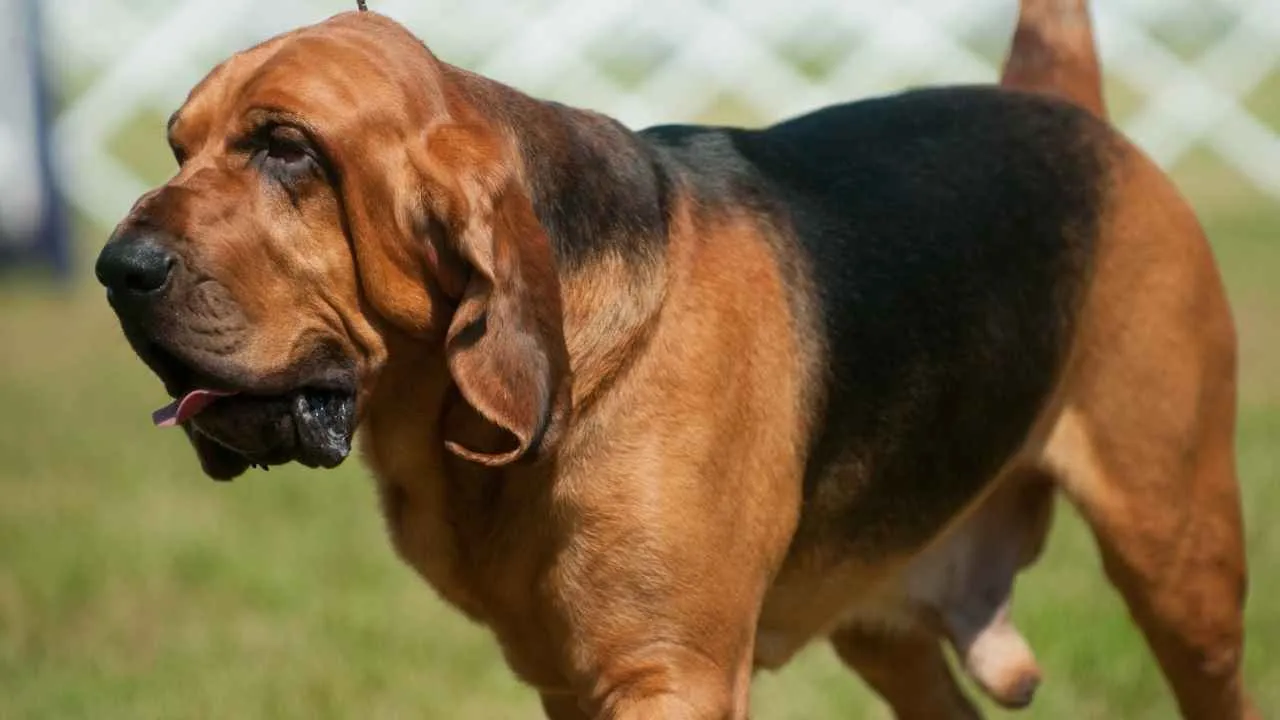
Long before modern tracking tools existed, Bloodhounds were already solving mysteries with their noses. These scent-savvy sleuths have been around since medieval France, helping nobles track game and people alike. Monks once bred them for their unmatched olfactory gifts and gentle nature. Today, they’re legends in law enforcement and search missions.
They walk into a room and look like they’ve just read a mystery novel. With their droopy ears, wrinkled skin, and long, solemn faces, they’re hard to forget. Don’t let that serious look fool you, though—they’re softies at heart. Built like detectives with a touch of drama, they carry charm in every wrinkle.
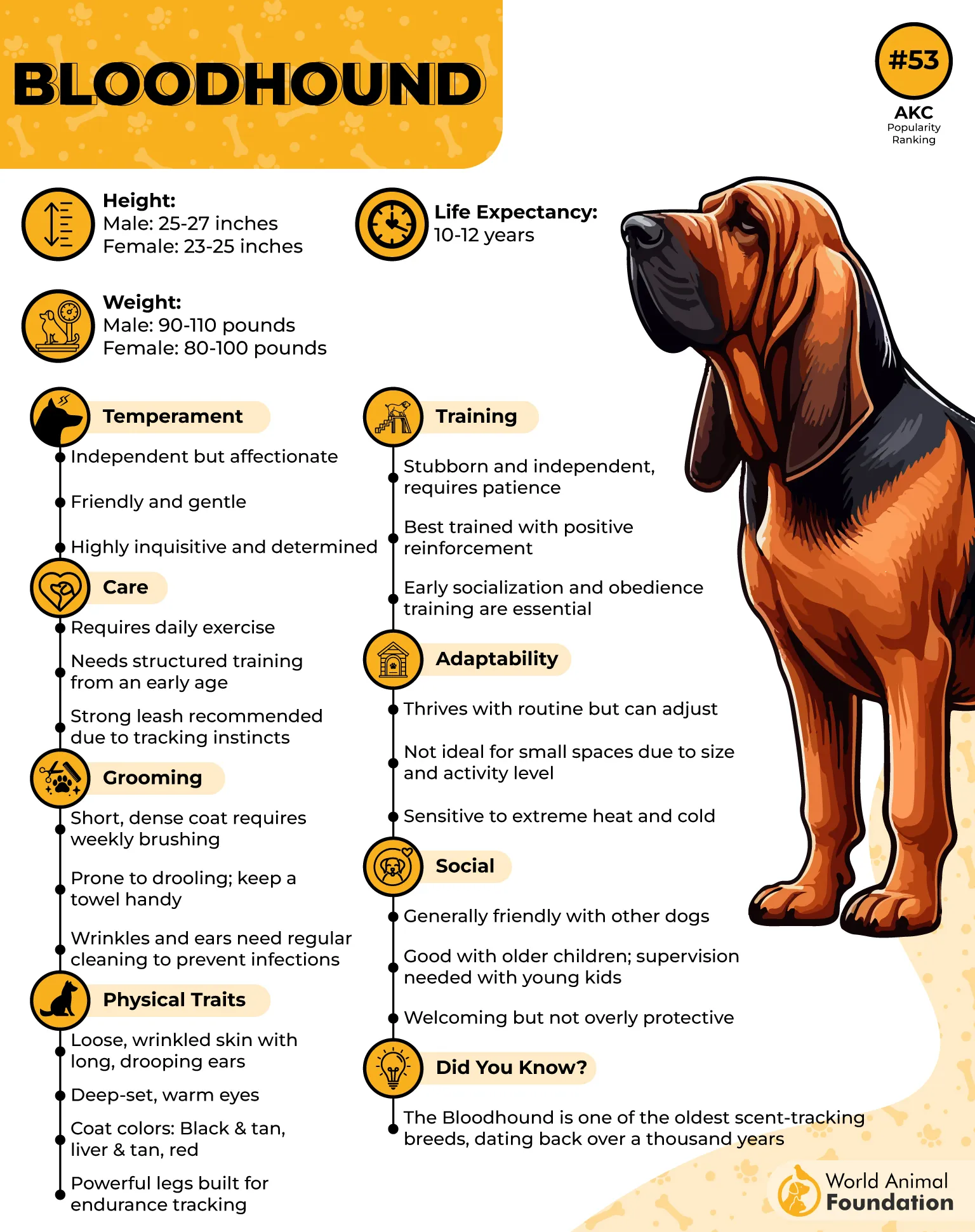
Their ability to scent track is so powerful it’s even admissible in court—no joke. A Bloodhound can follow a trail over miles old, and that kind of nose is in a league of its own. Compared to other breeds, their dedication to the chase is practically poetic. They’re not just tracking; they’re performing nose-powered art.
Training a Bloodhound is like negotiating with a toddler who knows they’re right. They’re sweet but independent thinkers who like to take the lead—literally. With patience, treats, and early socialization, they become excellent companions. And yes, they can be a fantastic family pet, especially with kids who love adventure stories.
Health-wise, their signature wrinkles need some cleaning to stay fresh and comfy. You’ll want to keep an eye on those long ears, too—they love collecting everything but compliments. Bloat and hip issues can show up, so regular checkups are a must. But with good care, they’ll stick around to sniff out life’s best moments.
3. Beagle
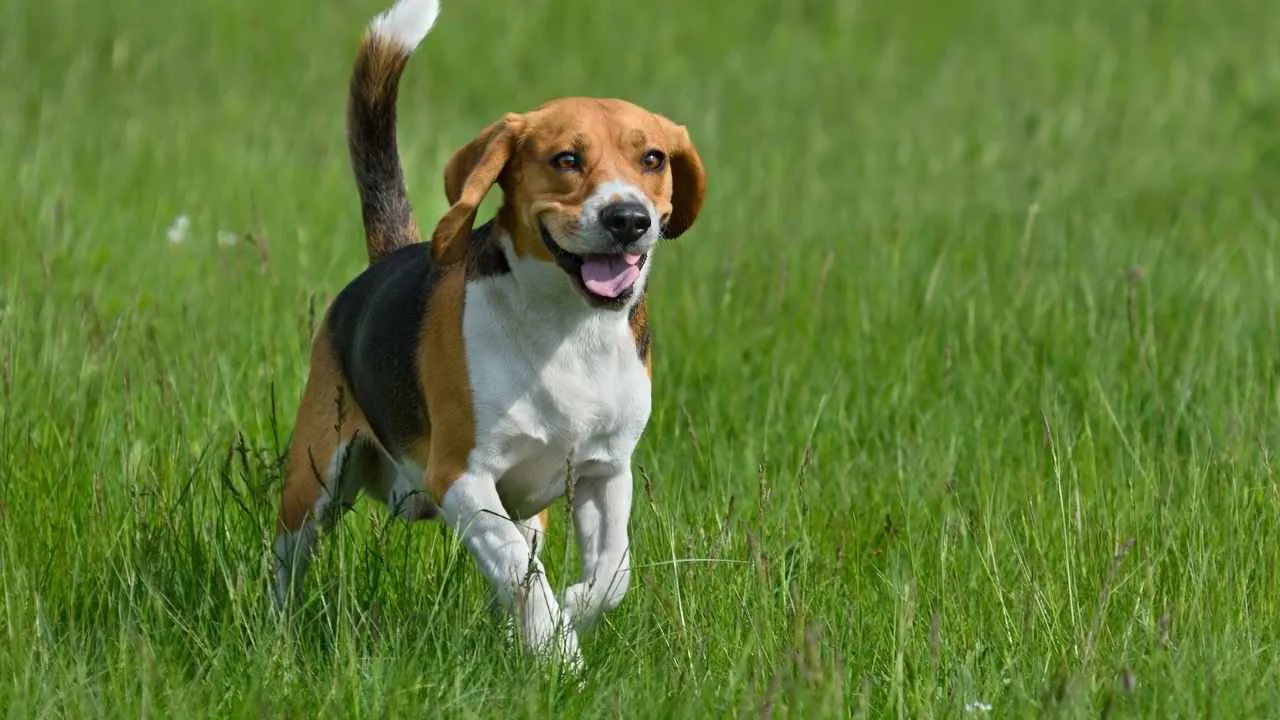
Beagles go way back—like, royal-court-level back. Originally bred in England for hunting hares, these little sniffers were prized for their persistence on a scent trail. Small in size but fierce in the field, they were the go-to pals for long countryside chases. Their roots may be ancient, but their tracking game is timeless.
These pups come dressed in a patchwork of browns, whites, and blacks, always ready for adventure. With those signature floppy ears and big, curious eyes, they’ve mastered the “who, me?” look. Built low to the ground and full of bounce, they’re basically pocket-sized detectives. Nothing about them says boring—they’re pure, compact charm.
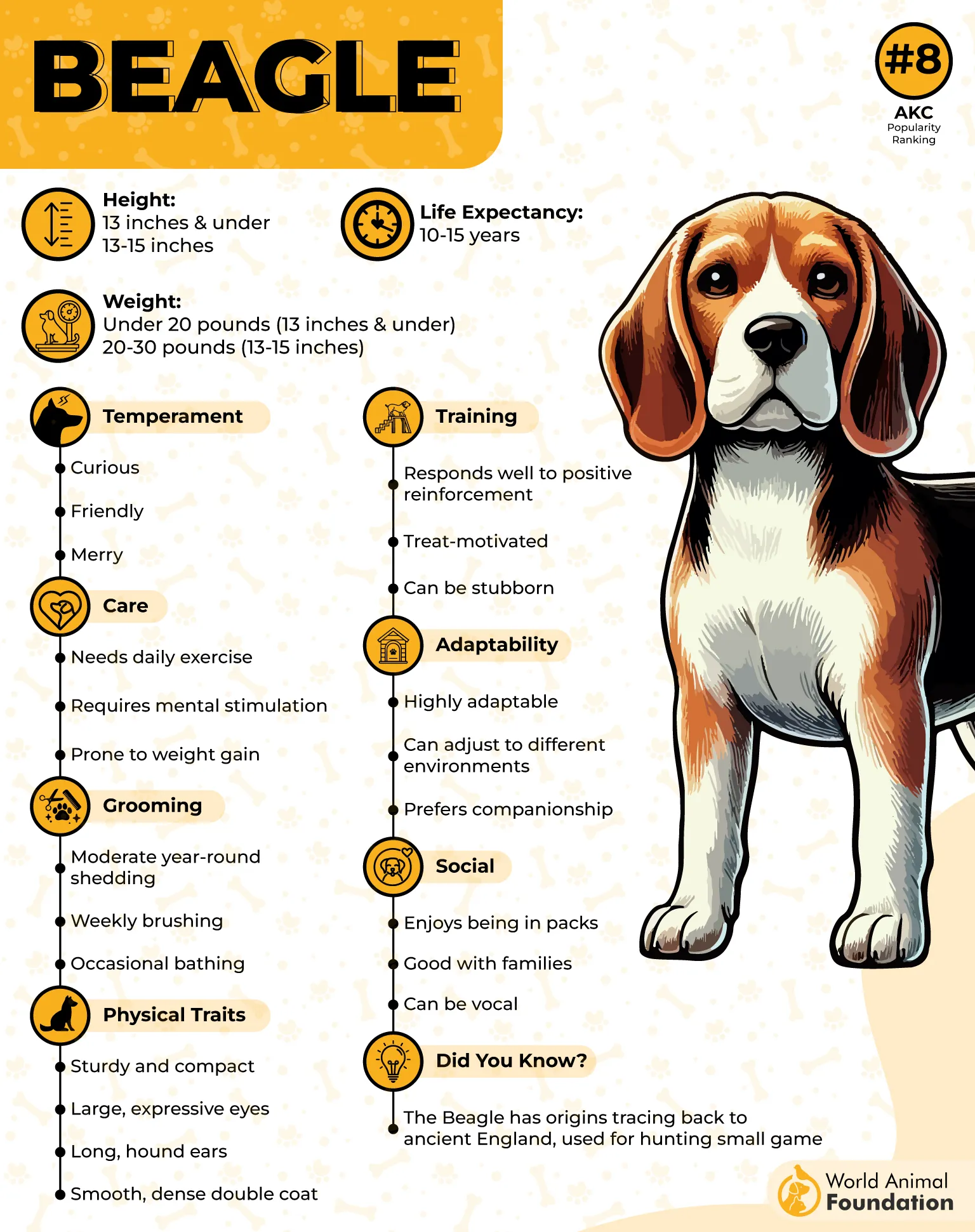
Their strong sense of smell is no joke—second only to the Bloodhound! What makes them shine as trackers is their mix of determination and fun-loving spirit. Beagles don’t just follow trails—they turn it into a sport. You’ll often see them with noses down and tails up, chasing mysteries like it’s a full-time job.
When it comes to training, Beagles like to make things interesting. They’re smart, but if you’re not exciting enough, they’ll follow their nose instead. With consistency, praise, and maybe a few tasty bribes, they get the hang of things. Social by nature, they get along well with other dogs and thrive with playful energy around.
Caring for a Beagle means keeping up with their love for the outdoors, as AKC stated. These explorers need daily exercise to burn off their zoomies and stay happy. Ear checks are a must, and yes—those sniffers sometimes get them into trouble! All in all, Beagles make great pets for families who like a bit of adventure.
4. Majestic Tree Hound
Bred from a mix of large hound breeds in the U.S., the Majestic Tree Hound is no rookie when it comes to tracking. Originally developed for trailing big game like bears and mountain lions, this dog means business. Hunters loved them for their relentless pursuit and booming voice. Their tracking instinct runs deep, and it shows.
This hound is massive- no exaggeration—with big bones, long legs, and a face full of wrinkles. With droopy eyes and long ears that sweep the ground, they bring dramatic charm to the forest floor. Their coats are often short but can come in various colors. Let’s just say—when they walk in, everyone notices.
One thing that sets them apart is their intense loyalty to their owner, making them not just capable but also dependable. Their nose is razor-sharp, and they won’t stop until they’ve followed the trail to the very end. Some handlers even say they’re better than high-tech gear. Honestly, they’re a dream pet for those who love the chase.
Training them takes patience and a whole lot of love, but it’s worth every bit. They respond well when the relationship with their pet parent is built on trust, not commands. Because of their calm yet focused nature, they’ve even been used in police work. They may not be flashy, but they’re steady as ever.
As hardy as they seem, they still benefit from routine vet visits and proper care. A good diet, room to stretch those long legs, and regular ear cleaning go a long way. They’re best suited for active homes with space and structure. And while they’re not your typical house animal, they can be a gentle giant with the right touch.
5. Labrador Retriever
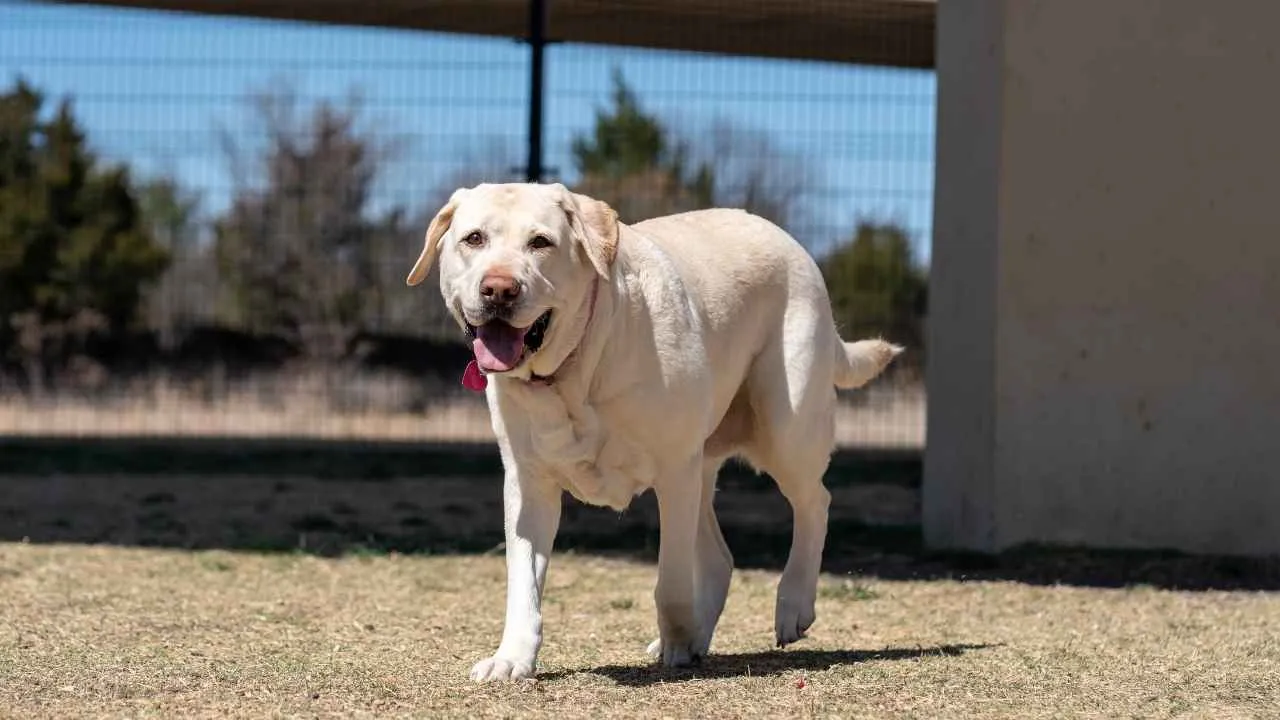
Originally bred in Newfoundland to help fishermen retrieve nets and catch, the Labrador’s roots are full of hustle. Once they crossed over to England, their sharp tracking instinct made them a favorite in the field. Hunters couldn’t get enough of their reliability and enthusiasm. This wasn’t just a water retriever—it was a tracking pro in disguise.
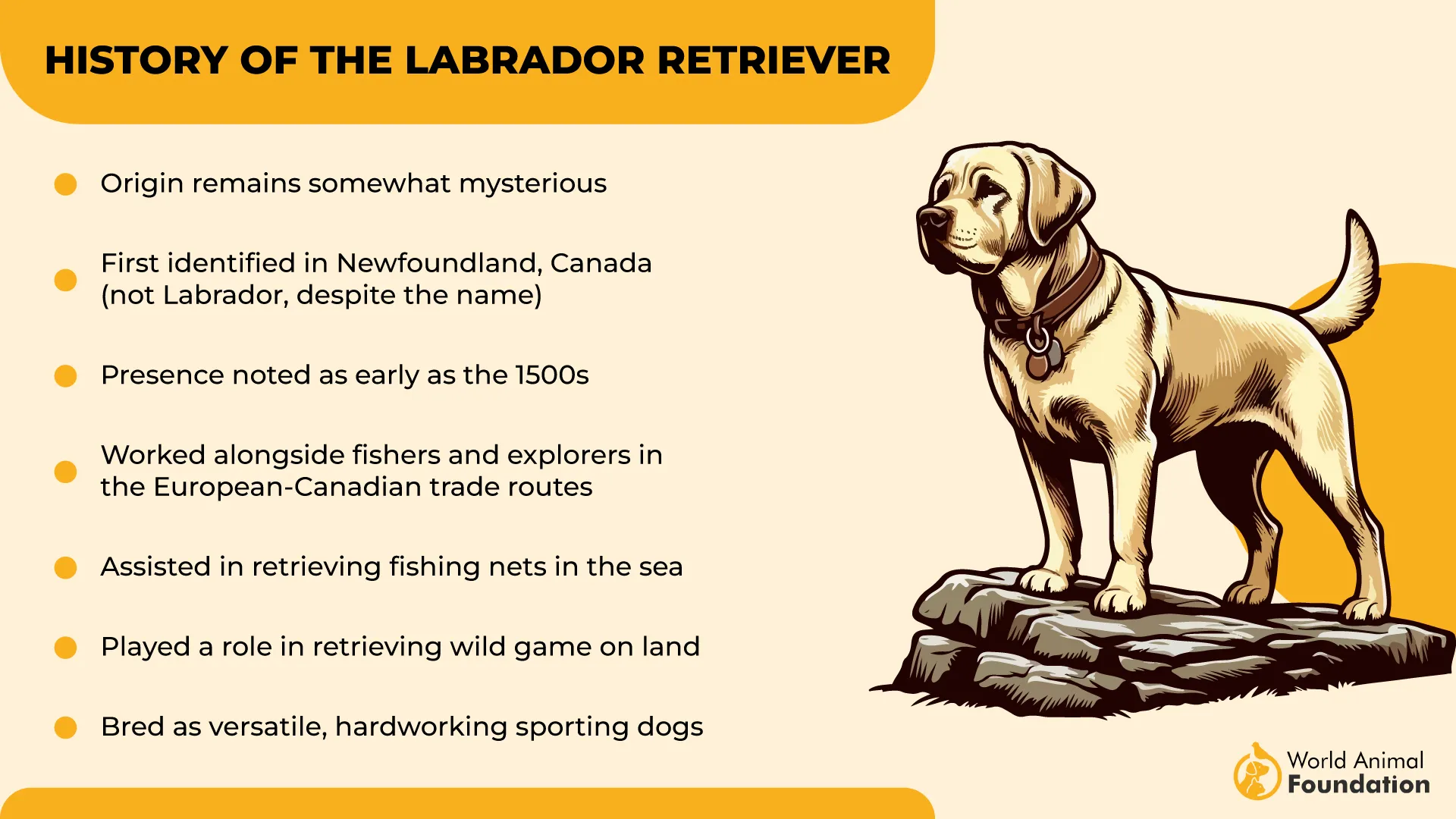
With a sturdy frame, expressive eyes, and that constantly wagging tail, Labs carry a friendly look that’s hard to miss. Their dense, water-resistant coat gives them an edge in all sorts of terrain. They’re built to move, dash, and dive with ease. Let’s just say they’ve mastered both charm and function.
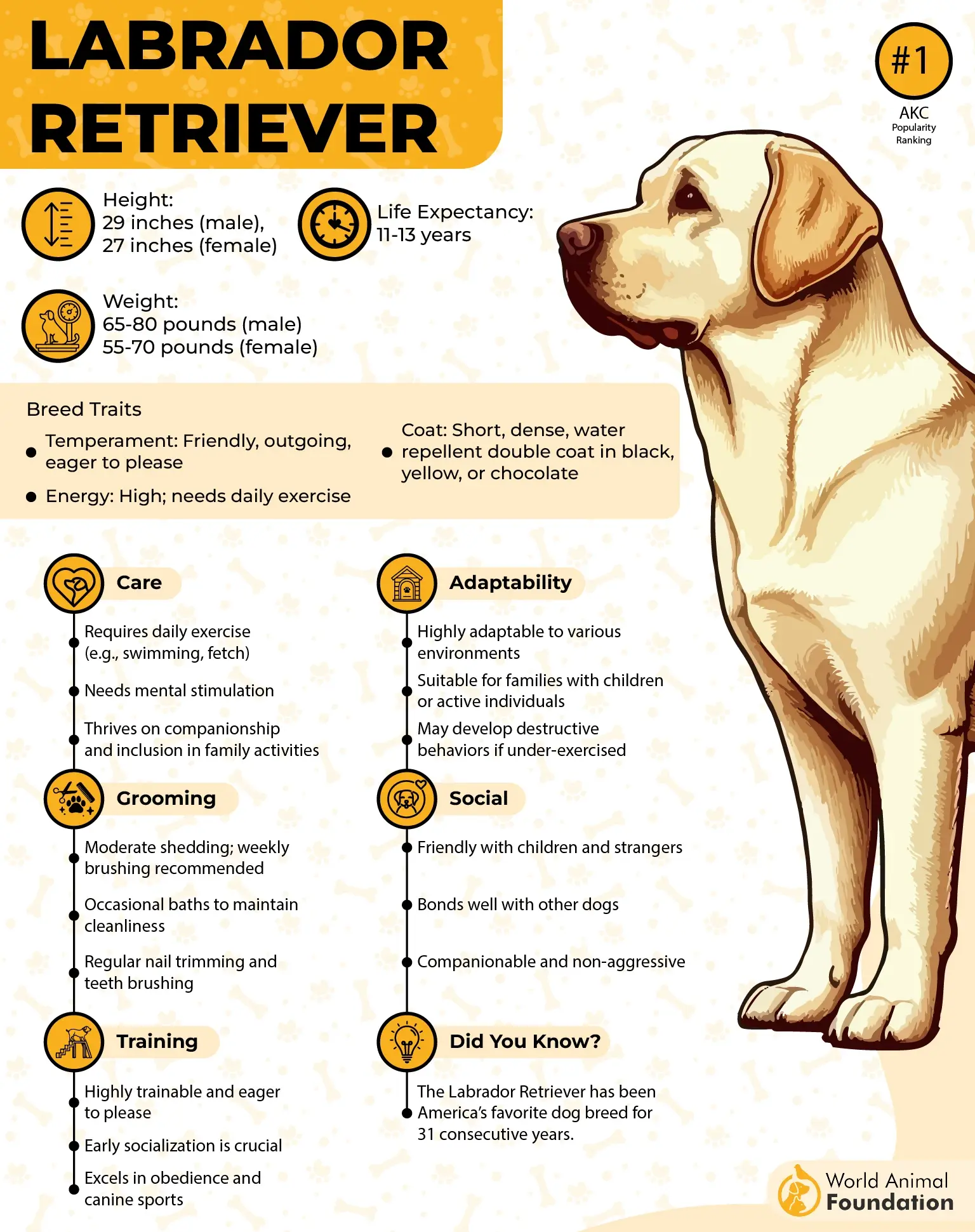
One of their biggest strengths is their unique ability to stay focused even in distracting environments. Whether it’s sniffing out game or tracking a trail, they do it with eager energy. Among all hunting breeds, they’re often the most adaptable. They get the job done, and they look good doing it.
Labradors love being part of the action, and training them is often more play than work. They’re people pleasers at heart, which makes teaching them a rewarding experience. Their happy-go-lucky vibe blends well into homes, too. No wonder they’re known as a great family dog across the world.
Caring for a Lab means staying ahead of shedding season and keeping their joints in check. Regular walks and mental play help avoid boredom and weight gain. They’re tough, sure, but not invincible—so yearly checkups are a must. With a little care, this lovable tracker stays sharp and healthy for years.
6. Mountain Cur
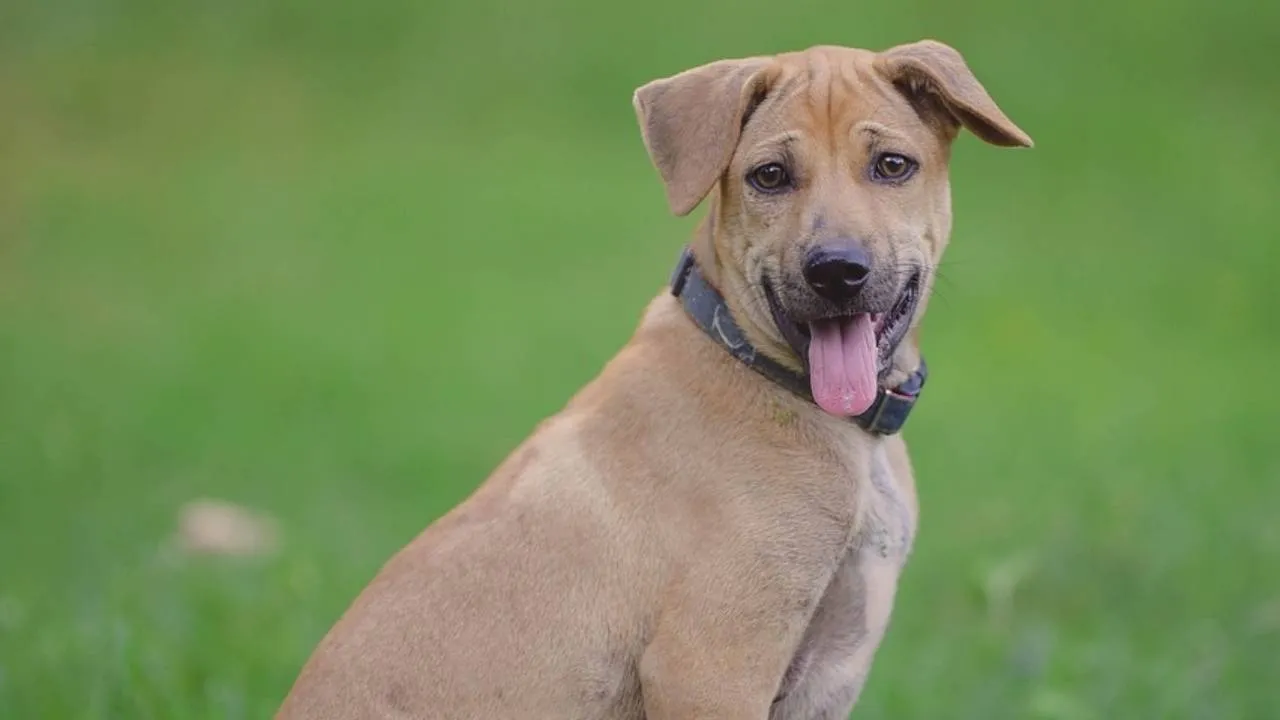
Bred by early American settlers, the Mountain Cur was a rugged frontier companion made for survival and tracking in the wild. These dogs weren’t just pets—they were partners in hunting, herding, and guarding the homestead. Their tracking instinct developed out of sheer necessity. Life in the woods demanded a nose that never quit.
They have a no-nonsense, athletic look with a weatherproof coat that’s always ready for the woods. Their sharp eyes and muscular build say one thing: they mean business. Whether curled up on a porch or dashing through trees, they look like they belong in motion. It’s the kind of dog that turns heads without trying.
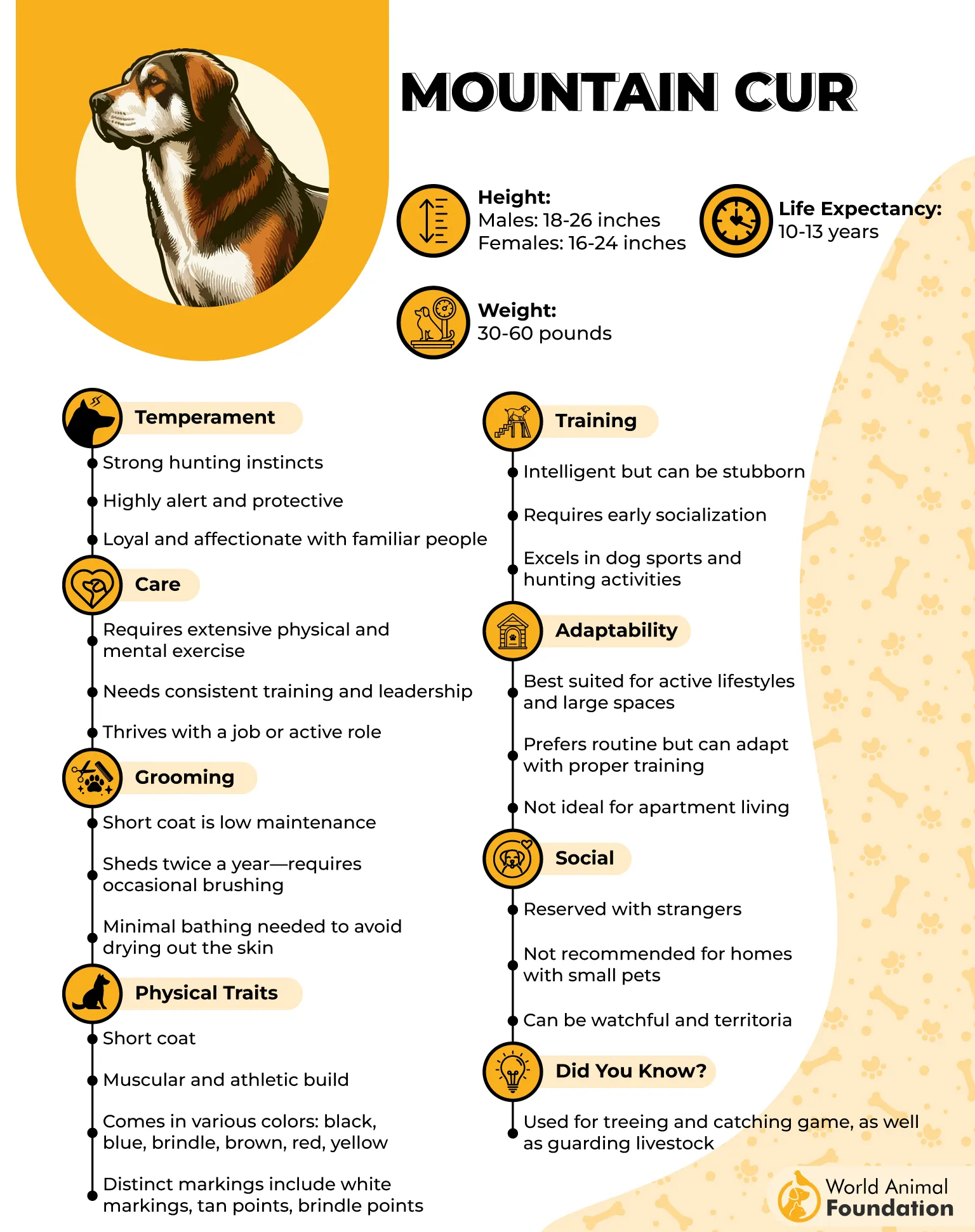
What truly sets the Mountain Cur apart is its incredible drive and grit. These dogs are wired to work and stay focused no matter the distractions. While they may not be showy, their determination speaks volumes. If there’s a trail to follow, you bet they’ll find it.
They’re not the type to lounge all day—they thrive when given a purpose. With the right training and an outlet for their energy, they become sharp, responsive companions. They tend to bond closely with one person and guard them with their heart. Early socialization helps balance their independent streak.
When it comes to care, they’re generally low-maintenance but still need consistent activity. Their short coat makes grooming a breeze, and they usually stay pretty hardy. Like all active dogs, they benefit from routine checkups and healthy meals. Keep them engaged, and they’ll return the favor tenfold.
7. Basset Hound

Originally developed in France for hunting small game, Basset Hounds were prized for their ability to track scents close to the ground. Their name actually comes from the French word bas, meaning “low.” With their exceptional noses, they could follow a trail for hours without giving up. They weren’t bred for speed—they were bred for results.
Their appearance is downright iconic: long, low bodies with droopy faces and ears that seem to go on forever. Those soulful eyes can melt the sternest heart, while their slow, waddling walk makes people smile. But behind the cuteness is a body built for work. They’re not just here to look adorable.
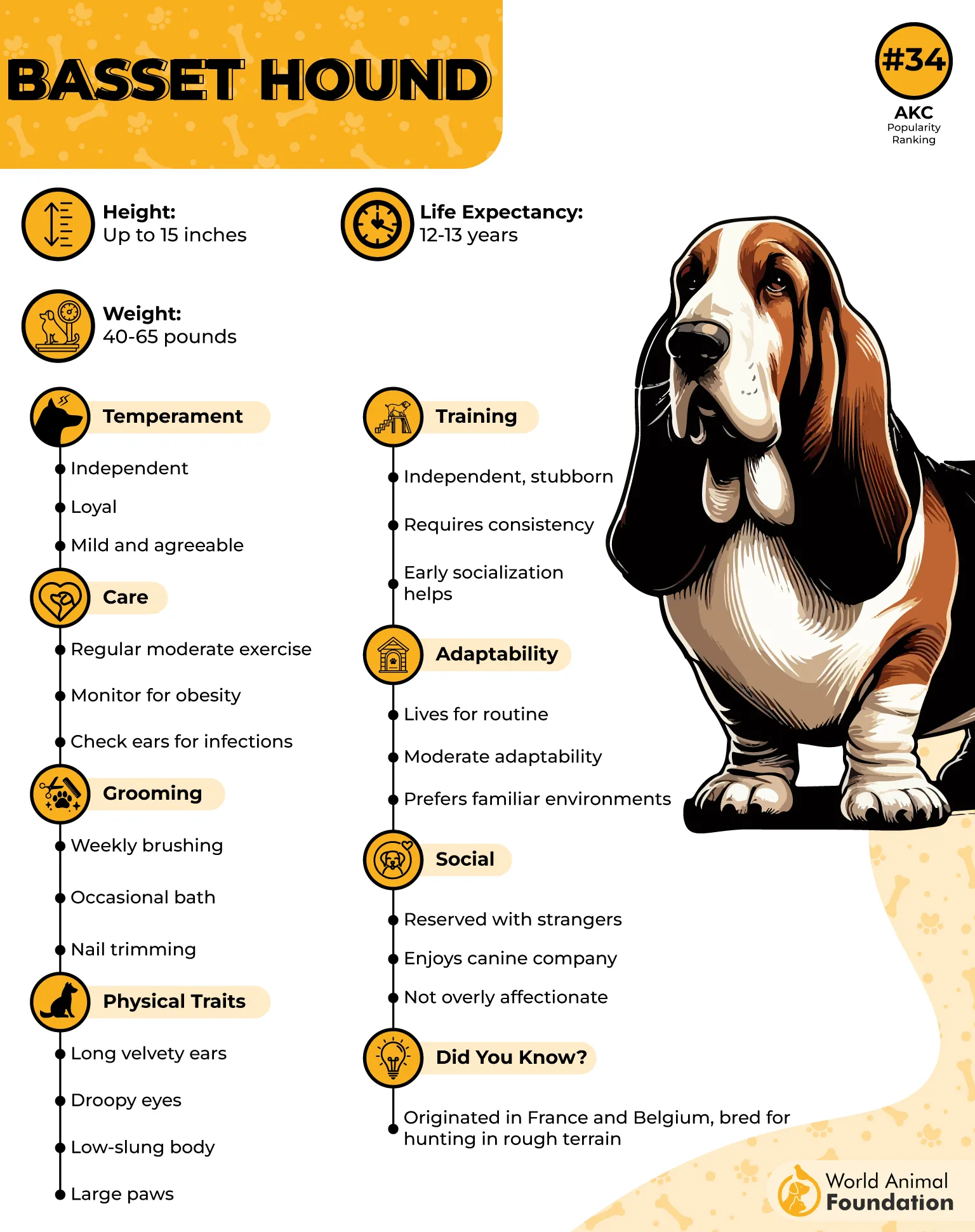
What really makes them shine is their nose—it’s second only to the Bloodhound’s. Their sense of smell is so powerful that once they’re on a scent, good luck distracting them. That laser focus on tracking is what earns them a spot among the best tracking dog breeds. Don’t be fooled by the floppy charm—they mean business.
Though sometimes a bit stubborn, their temperament is generally sweet, mellow, and patient, as per WebMD. They don’t need intense workouts but do enjoy a steady walk and a chance to sniff everything. Training them takes consistency and maybe a few snacks. They get along well with kids and make surprisingly good family canines.
Caring for a Basset Hound means keeping an eye on those long ears and watching their weight. Their short legs don’t like extra pounds, and they can face joint issues if not managed well. Regular brushing, ear cleaning, and moderate activity will keep them happy. And, of course, lots of belly rubs help, too.
8. Redbone Coonhound
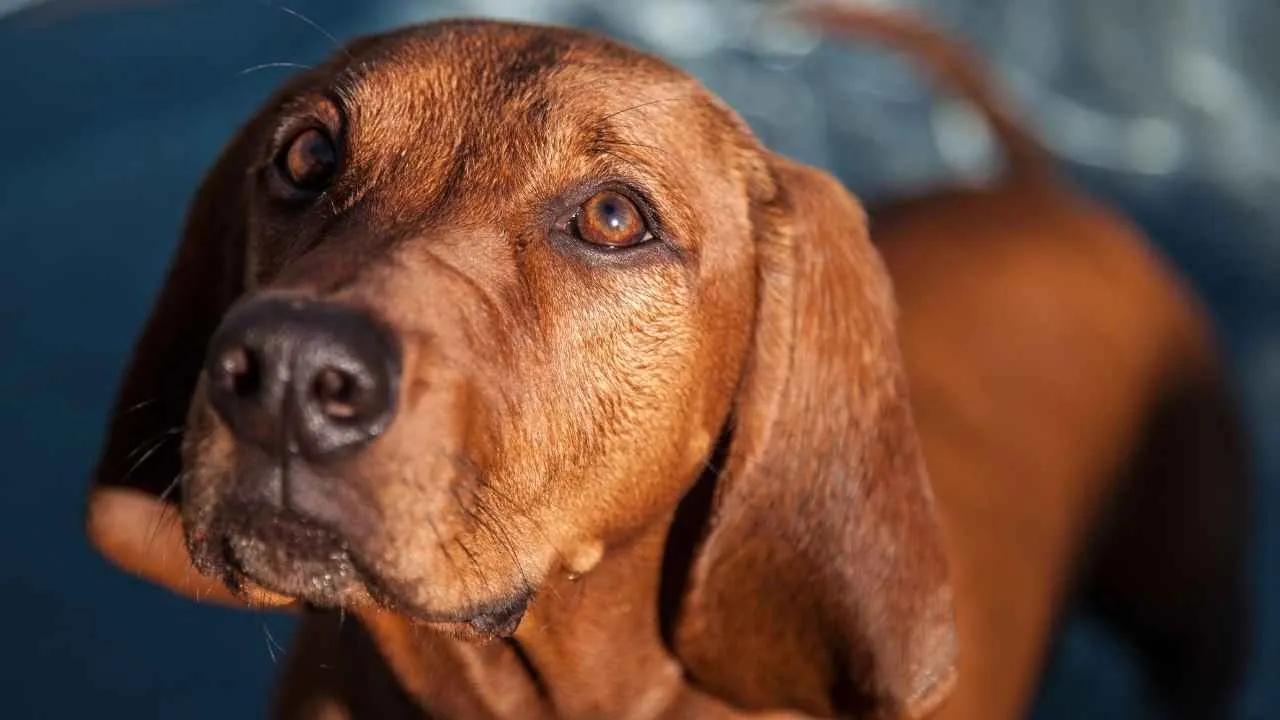
Born in the Southern United States, the Redbone Coonhound was bred by hunters who needed a fearless dog that could navigate swamps, forests, and rugged terrain. These dogs were built to chase raccoons and other game through thick brush and trees. Over time, they became trusted companions for their endurance and loyalty. It’s no wonder they earned their stripes as tracking pros.
Their sleek, rich red coat catches attention the moment they stroll by—it’s basically their signature look. They’re muscular yet lean, with eyes full of curiosity and ears that hang just right. Everything about them screams athleticism and charm. Even when standing still, they look like they’re ready to leap into action.
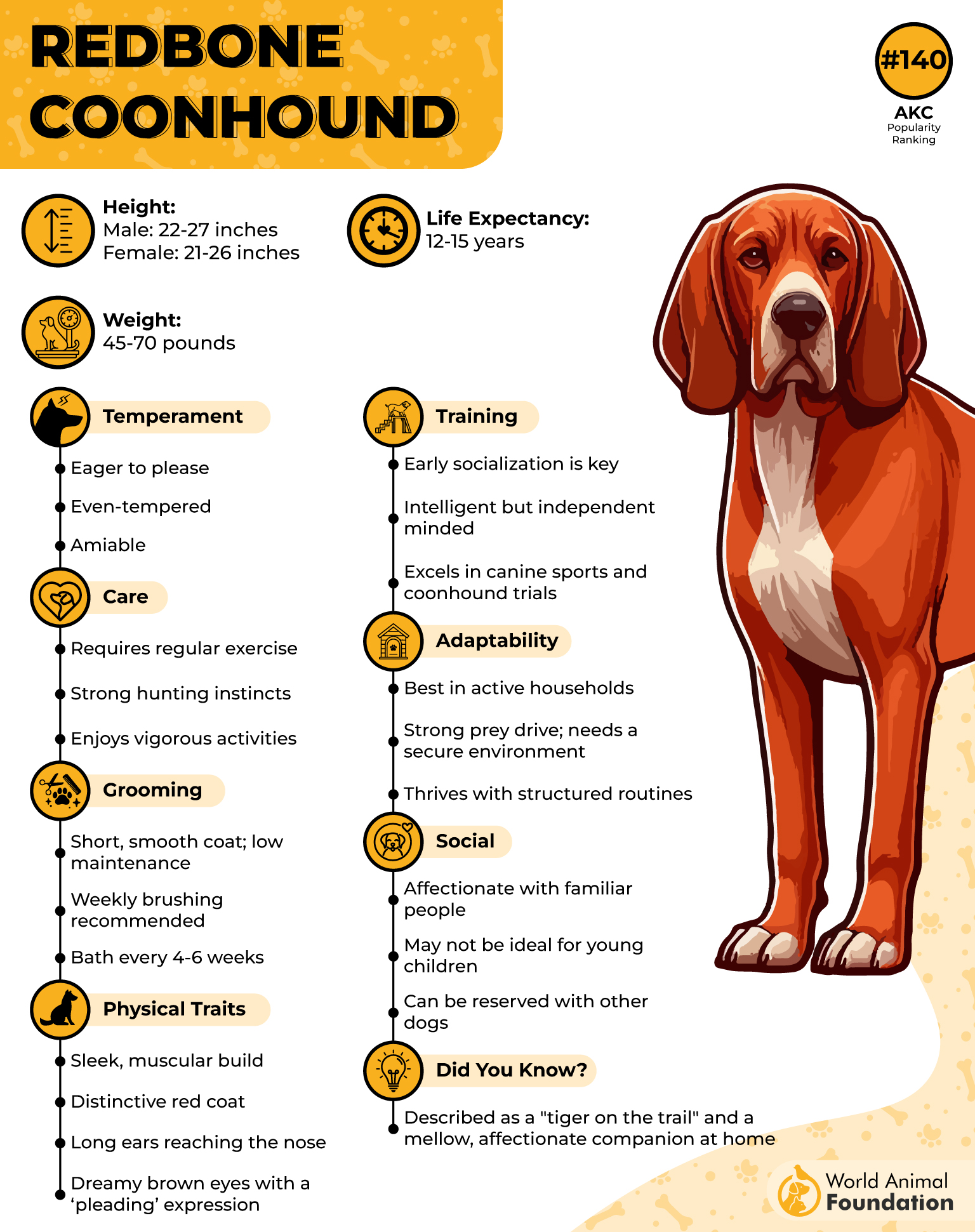
What sets them apart is how well they combine energy with precision—they don’t just follow a trail, they own it. Their nose is no joke, and they’ve got the determination to match. Among the tracking breeds, this one has its own bold flavor. They’re not built to sit around—they live to explore.
Redbones are all heart when it comes to their humans—friendly, outgoing, and incredibly eager to please. They pick up on training fast, especially when there’s adventure involved. Social and lively, they get along well with kids and even the neighbor’s dog if introduced properly. Life with them is never dull.
Keeping them happy means regular exercise, a healthy diet, and a good routine for ear cleaning. Their short coat is easy to manage, but their energy? That needs an outlet. A secure yard or long hikes will do wonders. And while they’re independent, they still love hanging out with their people.
9. English Springer Spaniel

The English Springer Spaniel has its roots in England, where it was originally bred as a versatile hunting dog. They were specially trained to flush game from dense underbrush, which made them a favorite among hunters. Their keen nose and energetic natures made them perfect for the job, and they’ve been working alongside people ever since.
With their medium-sized frame, glossy coat, and those big, expressive eyes, they’re pretty hard to miss. Their ears are long and beautifully floppy, making them look endlessly adorable. Their friendly, slightly mischievous expression lets you know they’re always up for an adventure. You’ll never meet a Spaniel who doesn’t look like they’re ready to go on a hunt, at least in spirit.
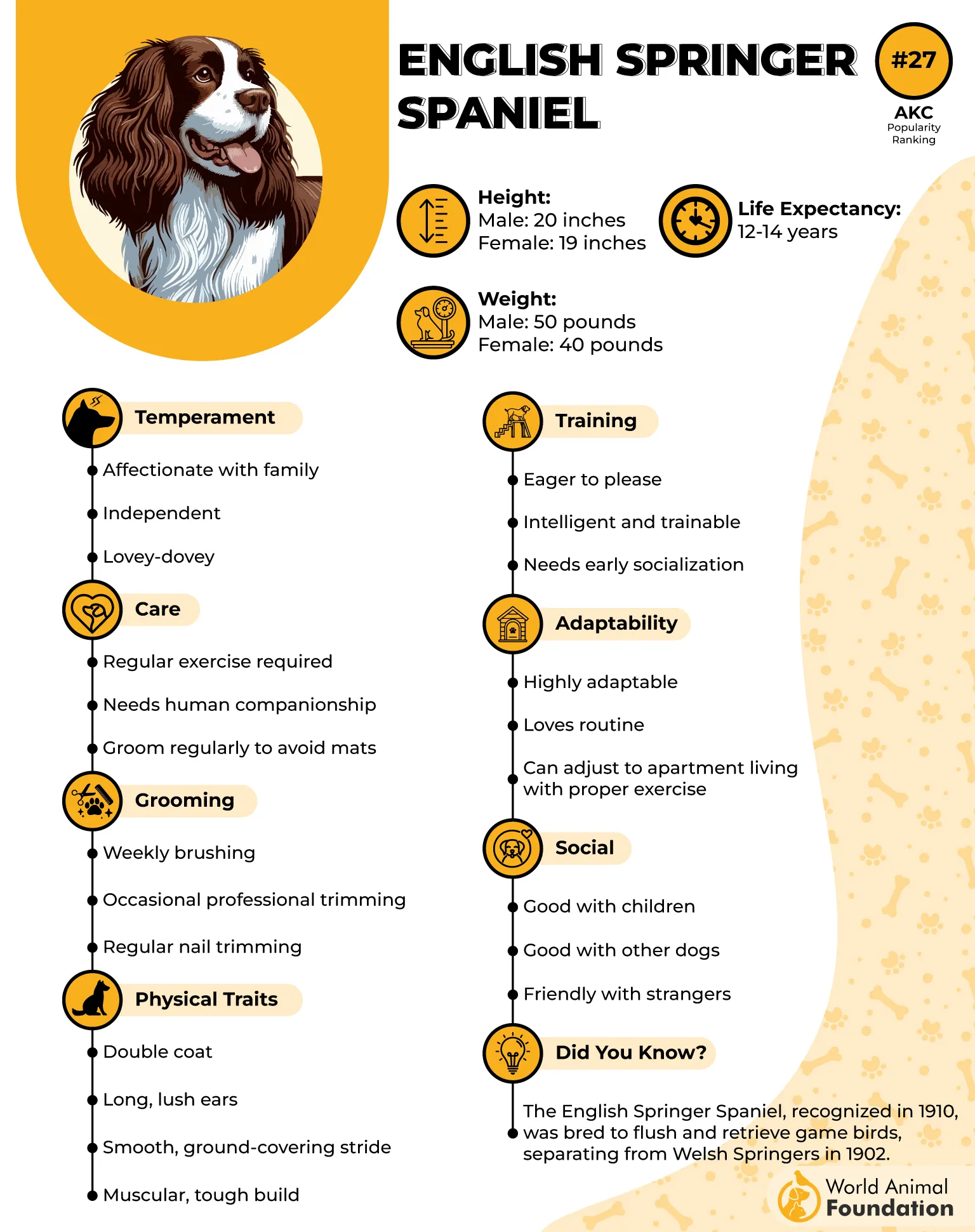
What makes them stand out as top tracking dogs is their enthusiasm and tireless energy. They’re not just skilled at tracking—they enjoy every moment of it. Known for their hunting skills, these dogs thrive in active environments and love staying on the move. No trail is too tough for this loyal companion, who’s always eager to work.
The English Springer Spaniel is a fun-loving dog with an affectionate nature that makes them a great fit for families. They get along well with kids and other dogs, making them a solid choice as a pet in a busy household. With their intelligence, they’re also fairly easy to train as long as you keep them mentally engaged.
Regular grooming is necessary to maintain their silky coat, and they do best with consistent physical activity. They can be prone to certain health conditions, so staying on top of vet visits and keeping an eye on their diet is key. But when treated well, they’re a loyal and loving family member that’s sure to bring joy to any home.
Conclusion
Tracking dogs come in all shapes and sizes, each bringing something unique to the table. Whether it’s the German Shepherd’s ability for personal protection or the Golden Retriever’s friendly nature, there’s a perfect dog for every need. Bird dogs, such as the English Springer Spaniel, are particularly prized for their sharp senses.
With their excellent noses and boundless energy, these breeds are built for the hunt. The Bavarian Mountain Hound, for example, is known to track wounded deer in harsh conditions, showing off their determination. Their instinctive drive to track prey is second to none, often ensuring success when hunting small animals.
These dogs aren’t just good for the field—they make wonderful companions, too. If you’re looking for a loyal friend who can double as a hunting partner, an American Foxhound or Black and Tan Coonhound might be your ideal match. Their strong prey drive makes them excellent trackers for various needs.
While some breeds, like the German Shepherd, are best suited for personal protection, others, like the Golden Retriever, are easygoing and fit well with families and other pets. Choosing the right dog depends on your lifestyle and the type of work or companionship you’re seeking.
Ultimately, whether you’re hunting rabbits or just looking for a dog to keep you company, the right breed can make a world of difference. From their dedication to their intelligence, these dogs offer far more than meets the eye, making them a great fit for anyone interested in canine companionship.

